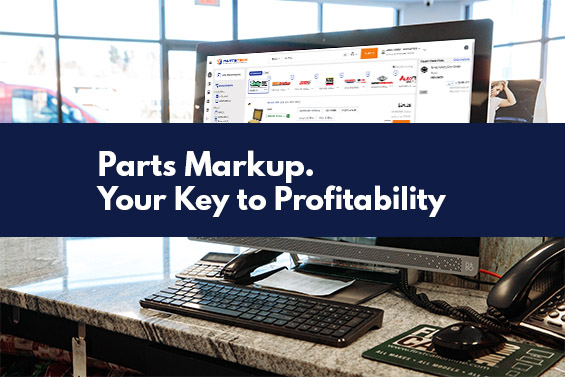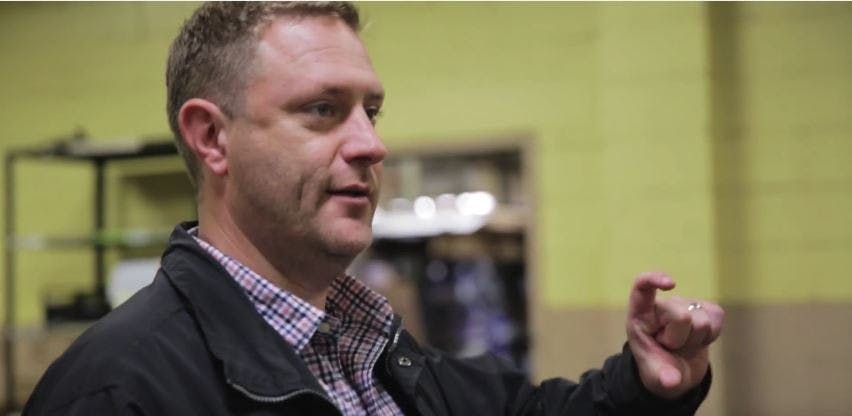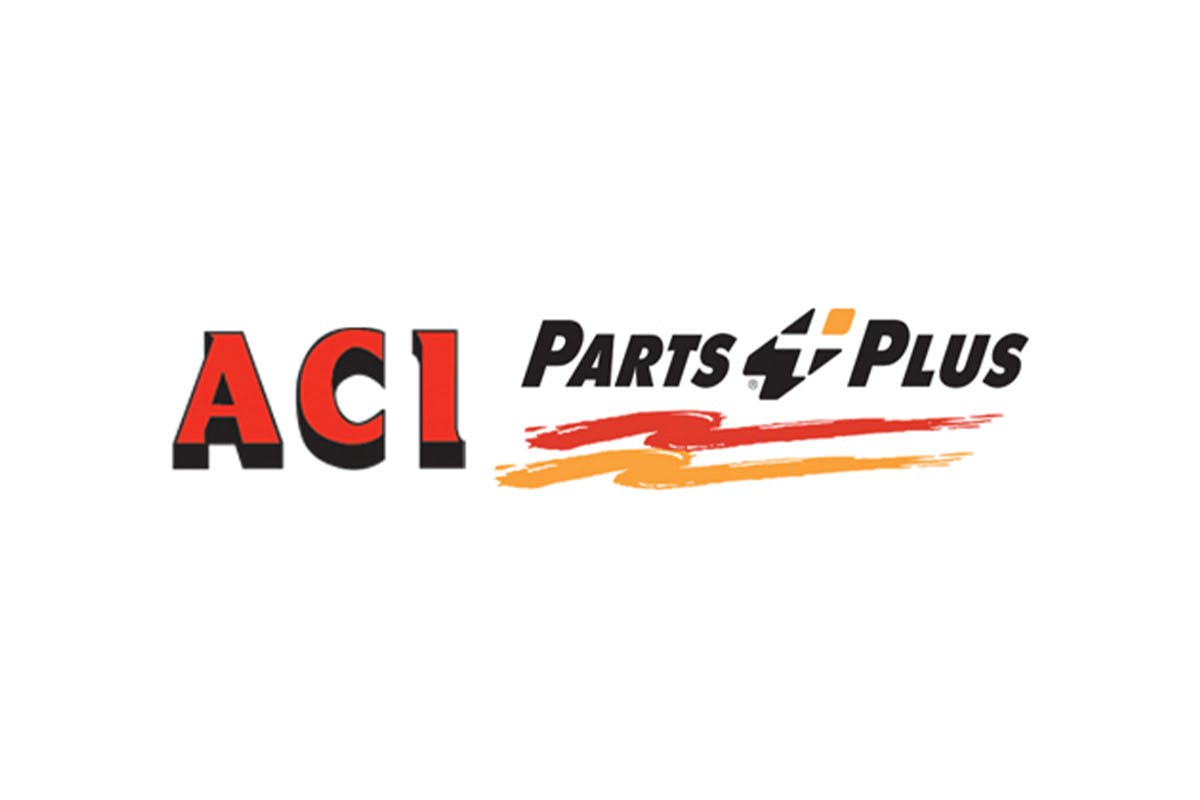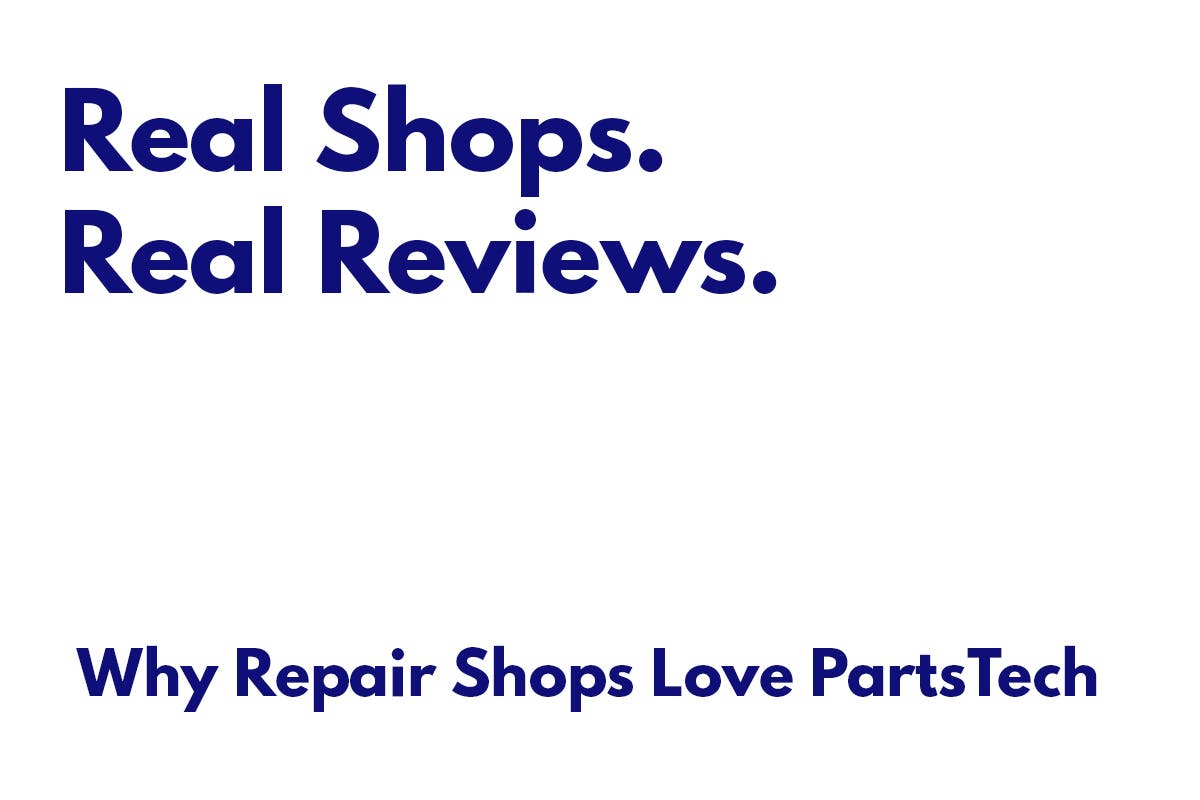

FUTURE OF E-COMMERCE TECHNOLOGY
click here for part 1
Erik: Do you think there’s room to improvement in that space? Could the e-commerce providers, like a PartsTech or another tool – could we be doing a better job showing the garages when they are going to get parts from you?
Ryan: Yes! And we as distributors could do a better job of setting that information up. A lot of the tools are in some of the online ordering systems, but they’re kind of a pain to set up.
Erik: You guys are sort of forward thinking. You already have GPS in your delivery trucks, you’re tracking all of that stuff, so in theory it shouldn’t be hard to move some of that GPS information down to the point of sale, the e-commerce system.
Ryan: Yeah, now it should be more automated. It used to be that you had to assign the delivery times per customer. You would say, I know on average I’m gonna get to this guy in 35 minutes. You would just plug in 35 minutes. But now you can actually see where the vehicle is and it gives a real-time updated GPS location – that’s even better, that’s what we’re after.
Erik: We talked earlier about some of the shop management systems your garages are using. What do you typically see in this area in terms of what SMS’s are in play and who do you have to integrate with?
Ryan: The biggest two are Mitchell and R.O. Writer, and then some of the national accounts like Mieneke have their MKey system. I think Christian Brothers is on R.O. Writer. So we started to integrate with different computer systems. It’s nice if we could have it all go through one online order system. Right now we’re on a couple and it would be nice to get down to one.
Erik: – So you have to…what’s your process today look like? You mentioned that you have to spend a lot of time controlling MCLs, mapping, what does that look like?
Ryan: – Yes. Well, that depends on the customer. It’s nice when we’re able to really maintain our MCL in our ERP and then that translates right out to the online ordering systems. Right now, one of our ordering systems just integrates with it, so it’s a one click update. The other one, it’s a completely different MCL, a completely different catalog, so that needs to be maintained. And then, some customers have the parts capability on their end, so they have to have the MCL on their end as well. So that gets complicated when we have the customer that has to have the MCL updated in their database for their system. It’s much easier for the guys that connect to us through ours that we’re managing, so we can manage one MCL for many customers versus – there’s a group of tire stores with 5 tire stores – and when we do an MCL update, we got to take it to all 5 stores.
Erik: – It throws everything out of whack at those stores until its fixed both on your side and then the corrections need to be made in the SMS system at the garage side. Is that right? So you basically have to touch the catalog or make sure the catalog is adjusted in two places. That’s a lot of work.
Ryan: That’s right. It’s a lot of work. But we want the parts sales, so we do it.
CATALOG
Erik:– Yeah, absolutely. So where do you see the technology in the space going in the next couple years?
Ryan: – More integration, a little more seamlessness. Less errors. I think the delivery tracking has been huge for us. It’s really helped us get more consistency in our delivery. It’s helped us identify problems with drivers.
I think as technology advances, things will just get better. It’s going to be more consistent, it’s going to be better quality of service. And then for the parts information, that’s getting better all the time – but we need it because there’s so many parts floating to market every day. Every year these vehicle manufacturers come out with new makes and models, and they, you know, don’t use the same filters. It used to be that the filters so many years’ worth of vehicles. Now it’s like, well this year, I can’t even tell you how many new filters we needed to add. Immediately. As soon as they hit the street.
Erik: – Right. So talk to me about new model years and new products coming to market, and getting the supporting product data down to the garage level as quickly as possible so they can understand “Hey, this part exists and Ryan at TBA has it in stock,” that’s critical, right?
Ryan: – Absolutely. A lot of times, we’ll be able to get those parts and they aren’t in the catalog data. So we have them and we can’t sell them.
Erik: No kidding. How long does that go on for?
Ryan: Oh, it just depends on the type of part. I mean, different manufacturers are better at it than others. I’m trying to think – we had new GM oil filters come in and it’s fine, they let us know what it is, we get it on the shelf – we have pricing, availability. So we load it in, we order it, and it might be a couple months sometimes before it shows up in the catalog.
Erik: And during that time, you can’t sell the product.
Ryan: No, not unless someone knows. Or we do it by OEM number. That’s by we have the counter guys that can hunt down things that aren’t readily available in the data.
Erik: – Looking forward, where do you see online order volume going for your business over the next couple of years? 5 years out, where do you think it is?
Ryan: – I think to will continue to go up because we’re continuing to expand. So as we expand, we still find a mix of customers, some that prefer calling. We advocate it. We like the relationship. We’d rather have a relationship and be able to service folks than just be a computer screen. There’s just not as much connection there. And it makes it easier for people to move elsewhere, or if they’re just shopping us for price. We’d rather create a partnership with our customers, that’s how we do good business. And we really need customers support to give them good service. You get a guy that wants to call me once a week for a part, can’t really give him the best service as I can for the guys that give us good support. And we teach our staff that. We have limited resources and we have to weigh how we’re going to use those resources and allocate to customers based on their support.
Erik: So thinking about technology in the garage, and one of the trends driving – or actually forcing some of technology in the garage is the consumer adoption of technology. So there are a lot of tools out there like OpenBay or Repairpal, you can go on and on, but there are tools out there that allow the consumer to quickly book repair on their smartphone so they don’t need to pick up the phone to call the garage. Maybe a little bit of diagnosing, too. So there’s technology that’s rapidly forcing the more tech savvy garages to adopt this stuff if they want to capture the consumer dollars. Do you see any of that flowing upstream or impacting you guys in any way?
Ryan: Oh sure, sure. It’s funny, but you know, we’ve been around for several years, so we lose customers every year from them closing. You know, I’ve been doing business with this guy for 30 years and he’s done. There’s not a lot of new people coming into the business. So we see garages kind of phasing out, and some of them are closing quicker because they aren’t keeping up with the technology. So the younger guys that are opening up shops have those types of capabilities, they are doing a better job with the marketing and they are able to draw in business, keep it and retain it better. We see that with national accounts especially, they are very much up on that and I think that’s what drives them to get more business in the market.
So for us, it’s going to be a factor where we want to be able to offer those same types of services. They want to be able to look up parts on their phone, or scan the vin, or the plate lookup is really handy. So the shops are wanting to do that, and we need to be able to keep up with them. And if we can’t, someone else will.
Erik: Do you see a day where you guys are delivering parts based on a schedule before the customer’s car even shows up. So, this is all happening electronically: customer schedules the car for repair at a garage, and the parts order automatically comes in to you guys and you’re delivering the part before the car even gets to the garage.
Ryan: Well, I think that’s interesting, but I think we get a lot of guys that are pricing stuff out and then they have to sell it to their customer. So I think that would work for some people, but I think there are a lot of “ifs” and a lot that goes on from one end to the other. So sure I see that as a possibility.
CALL VOLUME
Erik: What’s the typical phone call that your guys pick up here? What type of inquiries come in over the phone?
Ryan: Oh, all kinds of stuff. We carry a full line of parts, so we could be asked about anything from shop supplies to tire repair. You name a different kind of part. It’s typically, just calls for that, or they’re saying “where is my stuff,” or they’re asking about warranty.
Erik: When the garage orders from you online, do you ever get a call from the same garage, after saying “hey, did you see my order?” We did a survey, in PA anyway, maybe it’s unique to distributors in that area but they experienced a lot of that calling after you place an ecommerce order. Do you see any of that?
Ryan: Well, we’ve been doing it long enough. I think that some people just getting into it – most people are on it now – “how do I know that order got placed?” Because it’s critical, they’re waiting on that part, they got a bay tied up and to then find out 30 minutes later…they’re in trouble.
Erik: –Right, much better to know, pick up the phone and talk to somebody and “hey I know John is putting the part on the truck and getting it out to me right now”
Erik: What about call volume? I mean, would you like to see call volume go down?
Ryan: I’d like to see more consistency. We get slammed, then we’re dead. And that’s the big advantage to online ordering. You’re not waiting on hold. You get right in. Even if there are 100 guys ordering parts right now, you can still get you part order in. It comes right off the printer and it gets put in play. When you call into our counter folks, a lot of time you are weighting on hold because there are those peak times. That would be the best thing, if we could smooth out the bottleneck. That is our biggest trouble. We’ve had to create what we call “surge protection” in a lot of different areas of our business. In the call center, there are only a couple other people that are going to be around to hear it. I’m in and out of the office, so I’m not always here to do it, but sometimes I’ll pick up the phone to try to help somebody, or my business partner, the general manager. In the delivery area, we can pull more warehouse people to get parts pulled and out. We can take warehouse people and put them in a truck to deliver parts when we have no delivery trucks out there. It’s hard to do that with the phones. You have to do that with someone who’s pretty well trained on it. It takes more than just a warehouse worker to answer the phone and field the call for the customer.
click here for part 1


